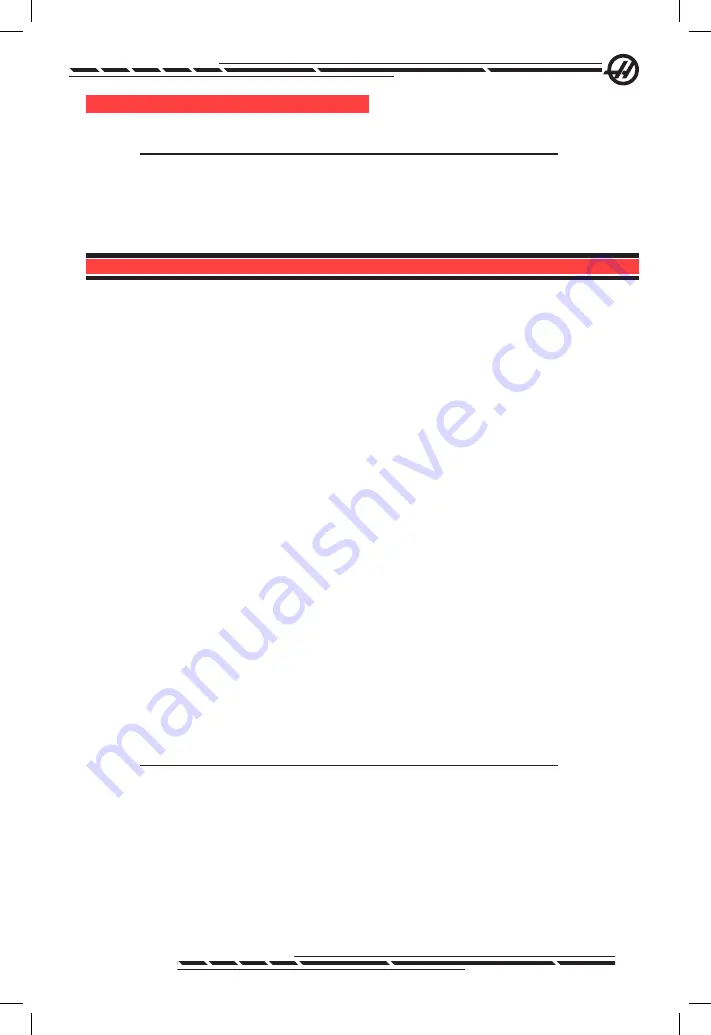
3
96-0041 Rev V
March 2012
l
eveling
The Toolroom Mill is leveled in the same manner as a VF-Series machine.
NOTE:
Before any axis movement takes place, remove the shipping
bracket from the spindle and table, and remove any wooden
crating from the top of the spindle head. Severe damage will
occur if machine operation is attempted with the shipping bracket
in place.
4. MACHINING PRACTICES
This section is a general overview of basic machining practices. It is intended
to familiarize you with basic setup and operation techniques. Good machining
practices extend tool life and in the end can save money.
Insert Selection
Although inserts are expendable it does not mean that an operator should be
careless in the setup. The following are the most common insert materials
used. Each has a description of its characteristics and common usage.
High Speed Steel
• Allow for higher rake angles
• Resists chipping
• Resists softening due to high temperatures.
Carbide
• Good resistance to high temperatures
• Lower edge strength than high-speed steel
• Different composition of carbide can result in different inishes
Ceramic
• Yields good inish
• Requires negative rake angle due to low strength
• Requires very rigid setup
• Requires high horsepower
Diamond
• Four times harder than carbide
• Can retain their cutting edge for almost the length of the tool life
• Excellent stability for close tolerance work
• Excellent inish quality
NOTE:
Remember to use the highest quality tooling designed for CNC
machines to achieve the best cutting condition possible.




















